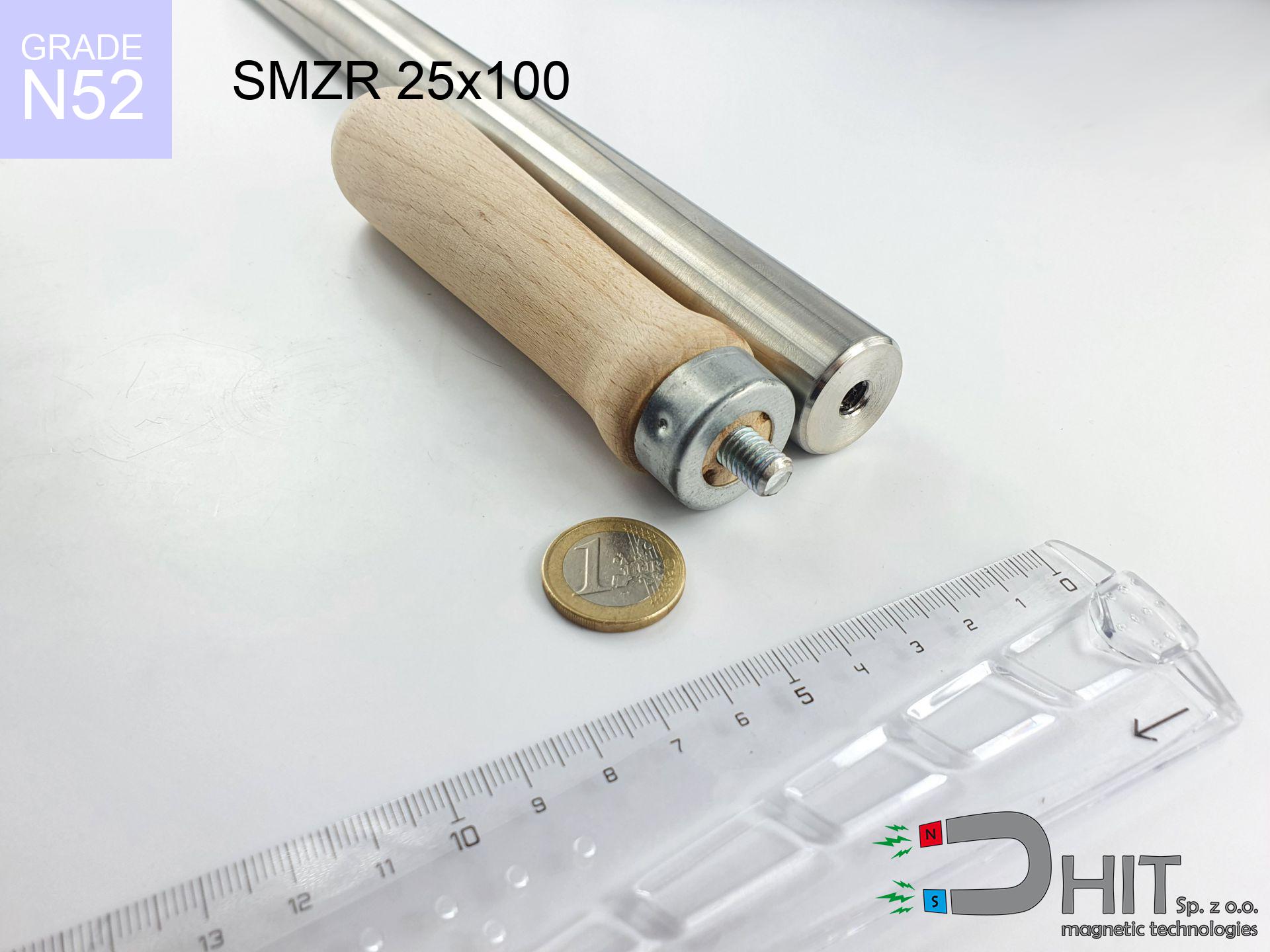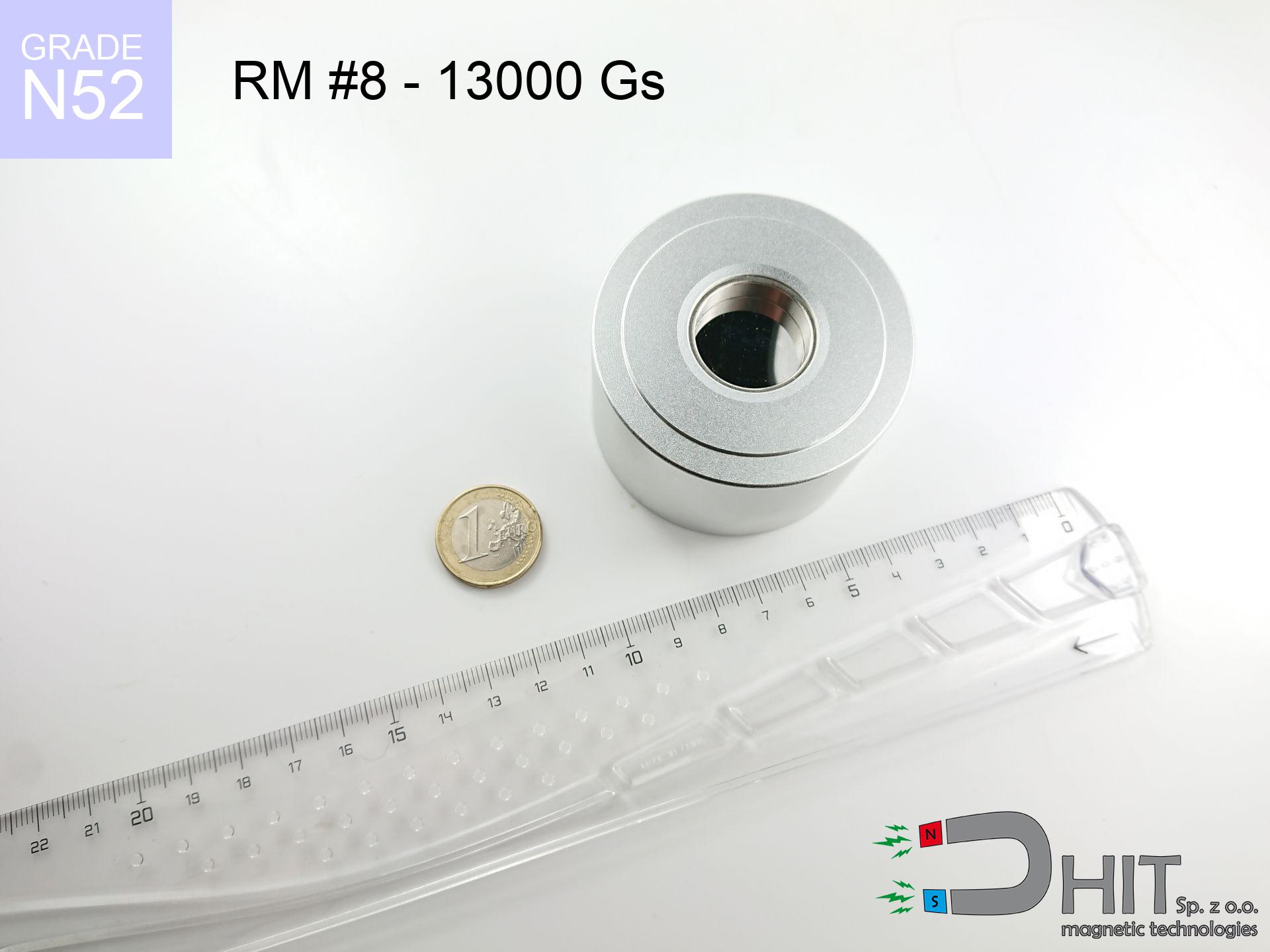SMZR 25x100 / N52 - magnetic roller
magnetic separator with handle
catalog number 140232
GTIN: 5906301813408
diameter Ø
25
mm [±0,1 mm]
height
100
mm [±0,1 mm]
max. temperature
≤ 80
°C
catalog number 140232
GTIN: 5906301813408
diameter Ø
25 mm [±0,1 mm]
height
100 mm [±0,1 mm]
max. temperature
≤ 80 °C
307.50 ZŁ gross price (including VAT) / pcs +
250.00 ZŁ net price + 23% VAT / pcs
bulk discounts:
need more quantity?Want to talk about magnets?
Give us a call tel: +48 22 499 98 98 or contact us through form on our website. You can check the power and the shape of magnet in our power calculator magnetic calculator
Orders placed by 2:00 PM will be shipped on the same business day.
Specification: magnetic separator with handle 25x100 / N52
Magnetic properties of the material N52
Physical properties of sintered neodymium magnets Nd2Fe14B
Find suggested articles
Advantages as well as disadvantages of neodymium magnets NdFeB.
In addition to immense strength, neodymium magnets have the following advantages:
- They do not lose their power (of the magnet). After about 10 years, their power decreases by only ~1% (theoretically),
- They are exceptionally resistant to demagnetization caused by an external magnetic field,
- In other words, thanks to the glossy nickel, gold, or silver finish, the element gains an visually attractive appearance,
- They have very high magnetic induction on the surface of the magnet,
- Magnetic neodymium magnets are characterized by very high magnetic induction on the surface of the magnet and can operate (depending on the form) even at temperatures of 230°C or higher...
- The ability for precise shaping or customization to specific needs – neodymium magnets can be produced in a wide range of shapes and sizes, which amplifies their universality in usage.
- Significant importance in the industry of new technologies – find application in HDD drives, electric drive mechanisms, medical apparatus or very advanced devices.
Disadvantages of neodymium magnets:
- They are fragile when subjected to a strong impact. If the magnets are exposed to impacts, we recommend using magnets in a metal holder. The steel housing in the form of a holder protects the magnet from impacts, and at the same time increases its overall strength,
- High temperatures can reduce the power of neodymium magnets. Typically, after heating above 80°C, most of them experience a permanent loss in strength (although it is dependent on the form and size). To prevent this, we offer special magnets marked with the symbol [AH], which are highly resistant to high temperatures. They can operate even at temperatures up to 230°C, making them an ideal solution for applications requiring high-temperature operation,
- They rust in a humid environment. For outdoor use, we recommend using waterproof magnets, such as those made of rubber or plastic,
- The use of a cover or a magnetic holder is recommended due to the limited possibilities of manufacturing threads or complex shapes in the magnet
- Potential hazard to health from tiny fragments of magnets can be dangerous, when accidentally ingested, which is particularly important in the context of child safety. Additionally, small elements of these products can complicate diagnosis after entering the body.
Handle Neodymium Magnets with Caution
Neodymium magnets should not be near people with pacemakers.
Neodymium magnets generate strong magnetic fields. As a result, they interfere with the operation of a pacemaker. This is because many of these devices are equipped with a function that deactivates the device in a magnetic field.
Never bring neodymium magnets close to a phone and GPS.
Strong fields generated by neodymium magnets interfere with compasses and magnetometers used in navigation, as well as internal compasses of smartphones and GPS devices.
Dust and powder from neodymium magnets are flammable.
Avoid drilling or mechanical processing of neodymium magnets. If the magnet is crushed into fine powder or dust, it becomes highly flammable.
Neodymium magnets can demagnetize at high temperatures.
Despite the fact that magnets have been observed to maintain their efficacy up to temperatures of 80°C or 175°F, it's essential to consider that this threshold may fluctuate depending on the magnet's type, configuration, and intended usage.
Neodymium magnets can attract to each other, pinch the skin, and cause significant injuries.
Magnets will attract each other within a distance of several to about 10 cm from each other. Don't put your fingers in the path of magnet attraction, because a major injury may occur. Depending on how large the neodymium magnets are, they can lead to a cut or a fracture.
It is important to maintain neodymium magnets away from children.
Remember that neodymium magnets are not toys. Be cautious and make sure no child plays with them. They can be a significant choking hazard. If multiple magnets are swallowed, they can attract to each other through the intestinal walls, causing significant injuries, and even death.
You should keep neodymium magnets at a safe distance from the wallet, computer, and TV.
Strong magnetic fields emitted by neodymium magnets can destroy magnetic storage media such as floppy disks, credit cards, magnetic ID cards, cassette tapes, video tapes, or other devices. In addition, they can damage televisions, VCRs, computer monitors, and CRT displays. You should especially avoid placing neodymium magnets near electronic devices.
Neodymium magnets are the most powerful magnets ever invented. Their power can surprise you.
On our website, you can find information on how to use neodymium magnets. This will help you avoid injuries and prevent damage to the magnets.
Magnets made of neodymium are noted for their fragility, which can cause them to shatter.
Neodymium magnets are characterized by significant fragility. Neodymium magnets are made of metal and coated with a shiny nickel surface, but they are not as hard as steel. At the moment of collision between the magnets, small metal fragments can be dispersed in different directions.
If you have a nickel allergy, avoid contact with neodymium magnets.
Studies show a small percentage of people have allergies to certain metals, including nickel. An allergic reaction often manifests as skin redness and rash. If you have a nickel allergy, you can try wearing gloves or simply avoid direct contact with nickel-plated neodymium magnets.
To raise awareness of why neodymium magnets are so dangerous, read the article titled How very dangerous are powerful neodymium magnets?.



![magnetic separator 18x300 [2xM5] / N42 magnetic separator 18x300 [2xM5] / N42](https://cdn3.dhit.pl/graphics/products/sm-18x300-2xm5-xad.jpg)
![rubber magnetic holder external thread 34x6 [M4] GZ / N38 rubber magnetic holder external thread 34x6 [M4] GZ / N38](https://cdn3.dhit.pl/graphics/products/umg-34x6-m4-gz-rad.jpg)


